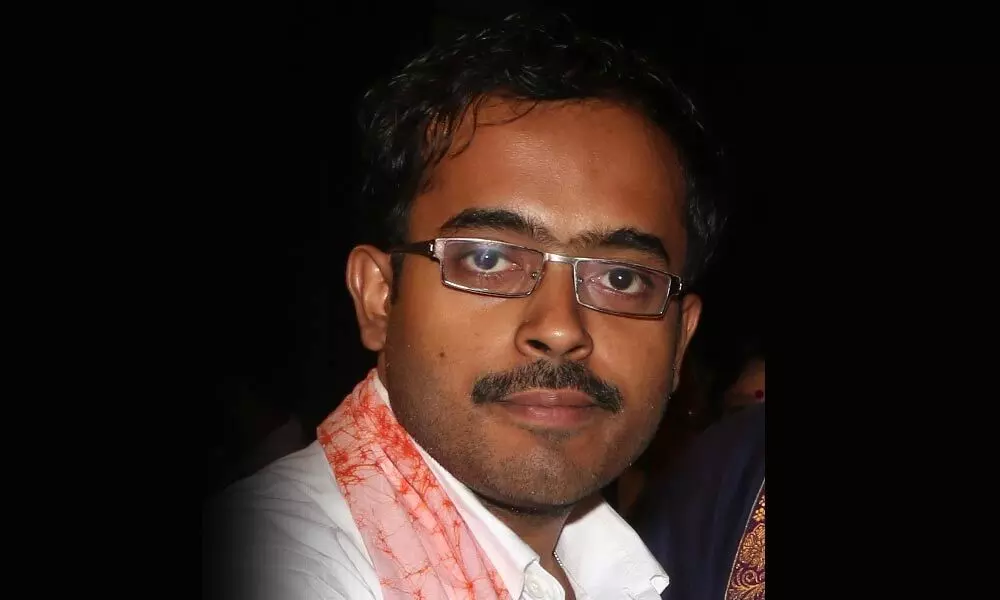Will Kolkata scientist's research revolutionse Covid treatment?
The research focuses on monitoring of the lung fluid movement and estimation of lung area using Electrical Impedance Tomography (EIT)
image for illustrative purpose

Kolkata: WHAT has space research got to do with lungs treatment? However hyperbole it may sound apparently, treatment of Covid and other lung diseases may not be the same again if the research work by a young space scientist from Kolkata starts seeing its commercial applications.
The intense research paper on "Monitoring of the Lung Fluid Movement and Estimation of Lung Area Using Electrical Impedance Tomography (EIT)" by Deborshi Chakraborty jointly with Madhurima Chattopadhyay, has already been recognised and featured by SpringerLink, a leading global scientific, technical and medical portfolio, providing researchers in academia, scientific institutions and corporate R&D departments with quality content through innovative information, products and services. Chakraborty is currently working as Space Instrumentation Engineer at Center for Excellence in Space Sciences India (CESSI), Indian Institute of Science Education and Research Kolkata (IISER Kolkata). He is also a visiting Engineer/Scientist at Laboratory for Electro-Optics Systems (LEOS)-Indian Space Research Organisation (ISRO) Bengaluru for Aditya-L1 mission. Aditya-L1 is India's first mission for the exploration of Sun by ISRO and its collaborative institutes.
"Lung condition of a patient under diagnosis can be imaged by conventional radiographic, x-ray computed tomography, or magnetic resonance imaging (MRI) techniques, but there are situations where it would be desirable to have portable means of imaging regional lung ventilation which could, if necessary generate repeated images with time. Being inexpensive, relatively portable and having high temporal resolution, EIT is suited for this application, but significant challenges, of course remains," said Chakraborty.
He added, "Specifically, for the patients under mechanical ventilation, pioneering work performed by a close collaboration between clinicians and EIT experts shows the viability of the use of EIT for establishing the best ventilator regime to be used by the critically ill patients at the bedside. EIT-derived numeric parameters would help the physician to evaluate the state of the lung of a patient under observation."
Chakraborty was a research fellow at Indian Institute of Technology Bombay (IIT Bombay) with prestigious 'Inspire Fellowship' from Department of Science and Technology (DST), Government of India, which he received twice.
Interestingly, physicians have always been interested to visualise interior body parts for treating the illness which insisted them to search for a diagnostic tool called medical imaging. It was in 1895, when Roentgen discovered X-rays which were unexpectedly found in his laboratory to be useful for visualising the tissue contrast on photography plates called planar radiography. Subsequently, the medical imaging field introduced X-Ray Computed Tomography (X-Ray CT), Gamma Camera, Positron emission tomography (PET), Single-Photon Emission Computed Tomography (SPECT), Magnetic Resonance Imaging (MRI) and Ultra SonoGraphy (USG).
In recent times, medical imaging field is enriched with comparatively newer tomographic imaging modalities with electric current and light signals. The computed tomography that uses the electric signal is called Electrical Impedance Tomography (EIT), said Chakraborty. He is quite confident and upbeat that once large scale commercial application of his research and experimentation begins, that will be a game changer in the diagnosis and treatment of lungs diseases, because a 24×7 monitoring of the lungs without the slightest side effect would be possible then.

